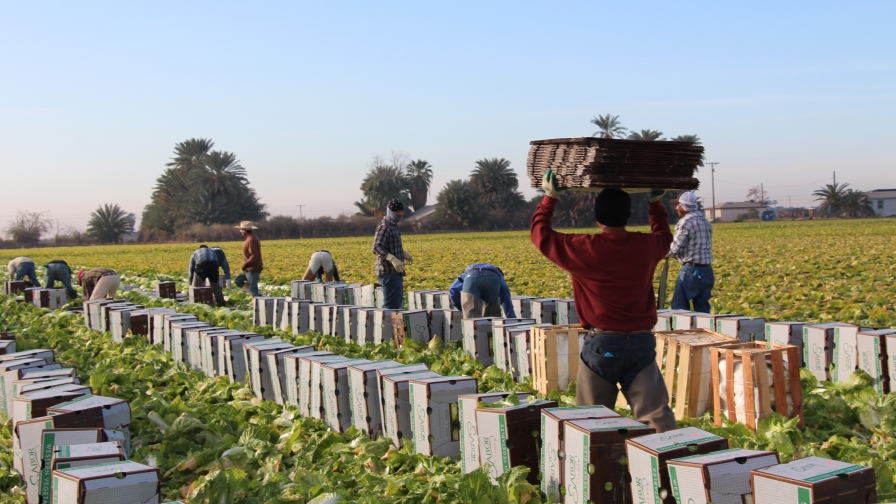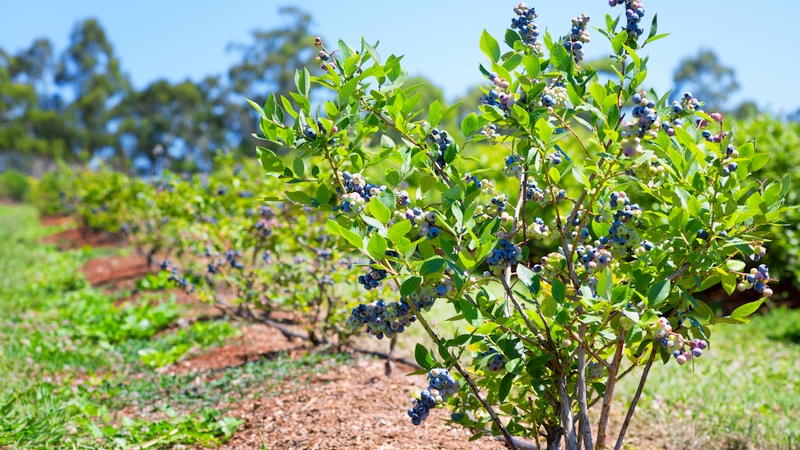Melon Production In Spain

Disease resistance. Insect control. Taste. Shelf life. High yields. Quality.
Those were just some of the topics covered in Almeria, Spain, during a tour in late May. The trip was sponsored by Groupe Limagrain, an international cooperative that specializes in vegetable seeds, field seeds, and cereal products. American Vegetable Grower took part in the visit to this area near the Mediterranean Sea, which is noted for its vast greenhouse production.
In fact, this region in Southern Spain is known for its “sea of plastic,” as greenhouses envelop the area for miles. The trip included stops at a commercial greenhouse producing a melon variety from France-based HM-Clause, which is a Limagrain business unit that also includes Harris Moran; two of HM-Clause’s research centers where melon varieties and other vegetables are trialed; and a visit with an open-field melon producer.
Greenhouses and melons were just part of the trip’s focus, which also honed in on production and breeding technology. Why melons? They are the third-largest crop grown in Almeria next to tomatoes and sweet peppers.
Almeria also is known as a supplier of greenhouse vegetables to Europe in the off season, which includes squash, cucumbers, tomatoes, and peppers.
In the spring, the area supplies melon and watermelon.
For melons, in general, high yields are typical as each plant usually produces seven to eight pieces of fruit, making them a lucrative crop.
Focus On Pathogens
At HM-Clause’s research station in La Mojonera, Almeria, several crops were evaluated in greenhouses for a variety of characteristics including resistance to disease. For melons, in particular, researchers at the station said they visit growers in the area to determine which pathogens are present in fields.
According to Denis Balen, HM-Clause’s global product manager for melons worldwide, understanding pathogen variance in fields is critical when breeding for resistance. “We need to make sure if a new strain of pathogen is present, we offer the best resistance package.”
Citing powdery mildew on melons as an example, Balen said the seed company keeps all strains of the disease so new varieties can be screened for resistance. “Our goal, in the end, is to provide the best level of resistance to pathogens,” he said.
In fact, Maria Angeles Buil, a researcher at the station in La Mojonera, said HM-Clause is introducing resistance to new races of powdery mildew to Galia melon varieties. Specifically, she said they are crossing wild melon varieties having resistance to new powdery mildew strains with Galia lines in order to introduce the resistance.
“It takes several years of backcrossing and screening to see which ones
are resistant,” she said. “It can take more than seven generations to introduce resistance.”
Backcrossing, explained Balen, is a breeding technique used to integrate a trait from one type of plant to another type. “This is most commonly used for breeding disease resistance into horticultural types but can also be
used for many other traits.”
As the time involved to bring a new variety to market can take several years — five years of breeding work to create the variety and three to evaluate it and launch it — Balen said using the latest technology, including molecular markers, can help expedite the process. Breeders need to have a good understanding of biochemistry and production conditions, he added.
Taste Is Critical
Although breeding for disease resistance is very important, Balen said taste is what will bring the consumer back for more. As a result, researchers also evaluate hybrids based on Brix, shelf life, and taste.
In fact, researchers have seeds extracted and saved from all vegetable varieties they have selected as having those pertinent qualities. Balen said parent lines are stored at the facility in La Mojonera.
“This is the wealth of the company,” he said of the seeds. “Size, appearance, and resistance are all very important, but taste is what the consumer is looking for.”
When it comes to taste, however, getting proper sweetness and flavor also involves the grower. According to Buil, in melons, too much irrigation is detrimental to overall taste. In the case of a popular melon type in Spain, Piel de Sapo, growers need to pay attention to their irrigation practices to achieve a Brix level of 14 or 15.
Melons In The Open
At HM-Clause’s research station in Murcia, which is about 139 miles from the one in La Mojonera, melons, along with peppers and tomatoes, are tested in open fields. The station also includes 2.5 acres of greenhouses, where studies are conducted on soil sterilization and the use of beneficial insects, among other areas of research.
Tomato trials are typically held in August, said Hilario Ramon Meseguer Carrillo, the station manager at Murcia. Tomato seed is sent from sister companies from around the world and is tested for strength, high yield, resistance, shelf life, and taste, he added.
It is a similar situation with peppers. “The trials let the breeders know how well each of the varieties will hold up,” Meseguer Carrillo said.
For melons, several types were being tested in the open field, which included Galia and Charentais types. As to be expected from the trials, the researchers are trying to determine which varieties offer the best traits for both the grower and the consumer.
For more information on HM-Clause’s success in the greenhouse and growing methods, go to the next page.
Success In The Greenhouse
Brisa a Galia-type melon from HM-Clause, is a profitable variety for late-season undercover production in Almeria, Spain. This melon is not produced for the local market; it is for export to the United Kingdom.
Brisa, along with the varieties Monzon and Norte, are the three Galia varieties that are grown in greenhouses in this area of Spain. According to Franck Berger, deputy CEO at HM-Clause, these three varieties have attributes that appeal to growers, shippers, and consumers as they offer long shelf life and great taste.
Typically, the melons produced in greenhouses in the area are irrigated and fertigated via drip, said Javier Achon, product development representative. The facilities are maintained at temperatures between 68° and 77° Fahrenheit.
As in open field production, crop protectants are used minimally as biological controls have proven to be successful. Specifically, the growers have had success controlling whiteflies with beneficial mites.
For more information on HM-Clause’s growing methods, go to the next page.
Trending On The Softer Side
Open field production not too far from one of the HM-Clause research stations near Vera, honed in on a 320-acre farm growing Charentais-type melons. Grower Stephane Perreau said all of the farm’s production is sold in France, with one-third of it targeted at the high-end market.
Adapting to a market trend toward minimizing the use of pesticides, Perreau said although the melons are not grown organically, they are produced with a minimum of crop protectants. Rotating ground every four years has helped provide a solid foundation for the melon crops, said Perreau. “We have to find new soil to have the best production conditions,” he added.








![Rinse and Repeat! Florida Growers Dealing With More Major Hurricane Impacts [Update]](https://www.growingproduce.com/wp-content/uploads/2024/10/Hurricane_Milton_afternoon_approach_100924.jpg)

